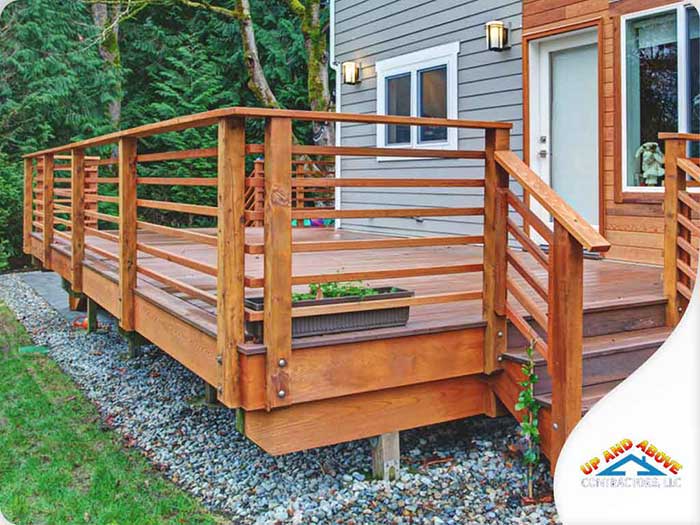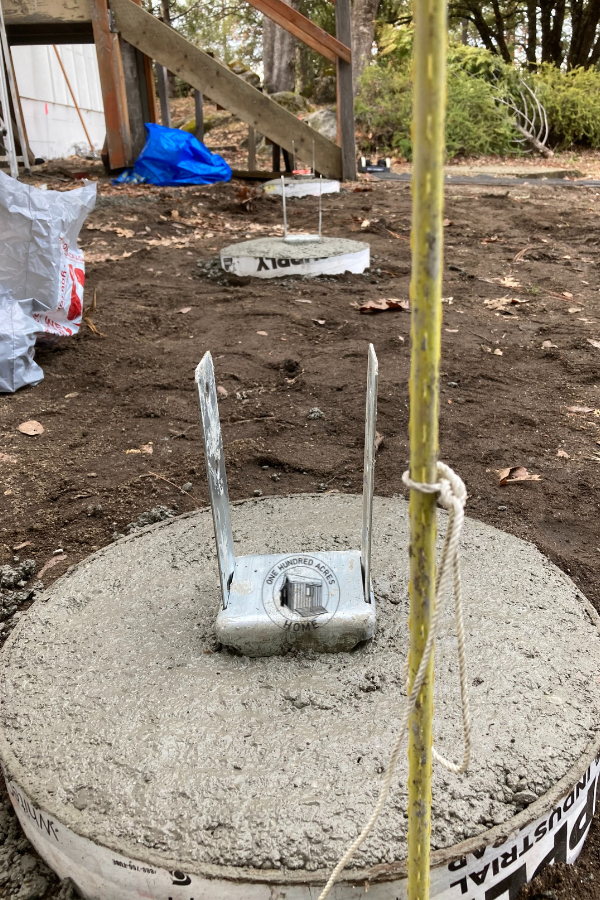Engineered for Success: The Scientific Research Behind Durable and Durable Deck Footings
Wiki Article
Professional Tips for Setting Up Deck Footings to Support Your Outdoor Room
When it comes to building a deck, one of the most critical components to consider is the installment of appropriate grounds. These footings are the structure upon which your outside room will rest, supplying security and support for years to come. What exactly does it take to install deck footings properly?Significance of Proper Deck Grounds
Proper deck footings are vital for guaranteeing the stability and long life of your outdoor space. When constructing a deck, it is critical to pay focus to the structure on which it will rest. Deck grounds give the essential support for the entire structure and assistance distribute the weight equally - Deck Footings. Without solid and effectively installed footings, your deck might become unstable, bring about safety threats and costly repair services.
In addition to security, correct deck grounds likewise add to the long life of your outside space (Deck Footings). Grounds that are designed and built to hold up against the components and dirt problems in your area will help stop the deck from working out or moving in time. By making sure the footings are properly sized and installed, you can lessen the threat of damage to the deck framework, prolonging its lifespan and lowering the need for expensive repairs or replacements

Selecting the Right Kind Of Grounds
When choosing the ideal sort of grounds for your deck, it is essential to think about factors such as dirt conditions, neighborhood building ordinance, and the total style of your outdoor area. The type of footing you select will play a crucial duty in making sure the security and longevity of your deck.One usual type of ground is the concrete ground. Concrete grounds are ideal for most dirt conditions and offer excellent support for decks.
In some instances, you may require to make use of customized grounds, such as heap grounds or deep foundations, if you are building a huge or multi-level deck. These grounds are developed to distribute the weight of the deck over a larger area, making certain security and stopping resolving or sinking.
Before selecting a sort of ground, it is necessary to consult neighborhood building regulations and policies to make certain conformity. In addition, think about the design and meant usage of your outdoor area. Elements such as the size, form, and load-bearing needs of your deck will influence the type of footing that is most suitable.
Preparing the Ground for Footing Installment
To properly prepare the ground for footing installment, it is vital to examine the soil problems and take required actions to guarantee stability and sturdiness of the deck. The very first action is to excavate the area where the footings will be set up.As soon as the area has been excavated, the next step is to compact the dirt. This can be done using a plate compactor or by making use of a hand meddle. Condensing the dirt aids to eliminate any kind of spaces or air pockets, which can result in working out and instability with time.
After compacting the soil, it is necessary to lay a layer of crushed rock or smashed rock at the base of the excavation. This will certainly give water drainage and help to avoid water from merging around the grounds, which can More hints result in erosion and instability.
Step-by-Step Guide to Setting Up Deck Footings
After correctly preparing the ground for footing installment, the next action is to begin the procedure of mounting deck grounds. This detailed overview will offer you with a clear understanding of exactly how to set up deck grounds for your outside area.Determine the place: Beginning by marking the positions of the deck footings using stakes and string. Make sure that the areas align with the style and layout of your deck.
Dig the openings: Make use of an article hole digger or an auger to dig the openings for the footings. The deepness and size of the holes should remain in conformity with local building regulations and the particular demands of your deck layout.
Level the holes: Utilize a degree to make certain that the openings are dug to the proper depth and are degree with each other. (Deck Footings)
Add crushed rock: Area a layer of crushed rock at the end of each opening to enhance water drainage and avoid the wood from decaying.
Insert the footings: Put the grounds into the holes, making certain they are degree and plumb. Utilize a level and a gauging tape to make certain accuracy.
Secure the footings: Put concrete right into the openings around the footings, loading them to the top. Use a blog post degree to make sure the footings remain degree as the concrete sets.
Permit time for treating: Allow the concrete remedy according to the manufacturer's guidelines before waging the deck construction.
Typical Mistakes to Stay Clear Of Throughout Footing Setup
One important facet to take into consideration throughout the installment of deck footings is avoiding typical blunders that can jeopardize the stability and long life of your outside room. While deck footings may appear like a straightforward and simple component of the building and construction process, ignoring particular factors can cause expensive fixings and possible safety and security risks down the line.
Furthermore, neglecting to install correct drain actions can trigger water to build up around the grounds, leading to rot, decay, and the ultimate weakening of the deck's structure. Using the incorrect type of footing product or stopping working to adequately protect the footings can endanger their architectural integrity.
To stay clear of these errors, it is necessary to speak with a professional or comply with market standards to guarantee correct ground installment. By doing so, you can make sure the stability and durability of your outdoor room, offering a delightful and risk-free setting for many years to find.
Conclusion
To conclude, mounting proper deck footings is important for the stability and durability of your outdoor area. By choosing the ideal type of grounds and appropriately preparing the ground, you can make certain a strong structure for your deck. Adhering to a step-by-step guide and staying clear of common blunders during footing installation will even more improve the resilience and safety of your deck.Appropriate deck grounds are necessary for ensuring the stability and longevity of your exterior area. The grounds serve as a connection between the deck and the ground, enabling the weight of the deck and its residents to be distributed equally right into the soil.One usual kind of footing is the concrete ground. Place the grounds: Position the grounds into the holes, making certain they are level and plumb. Secure the footings: Put concrete into the holes around the grounds, filling them to the top.
Report this wiki page